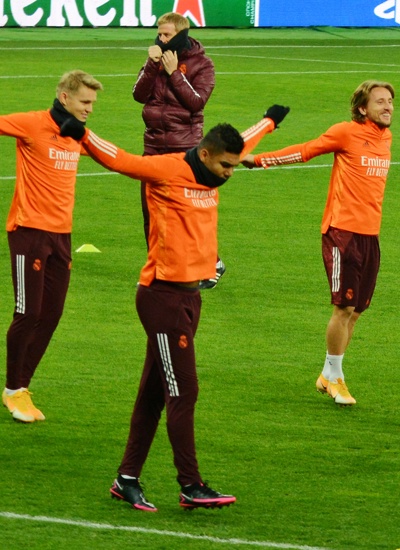
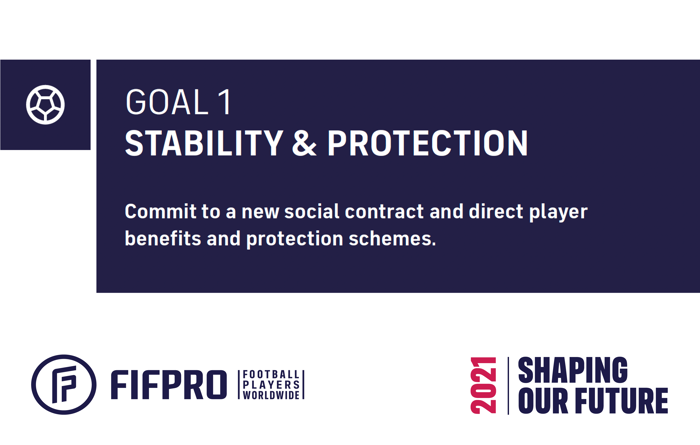
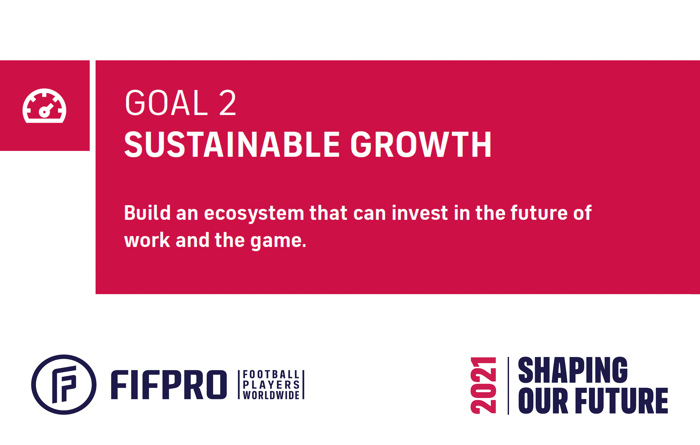
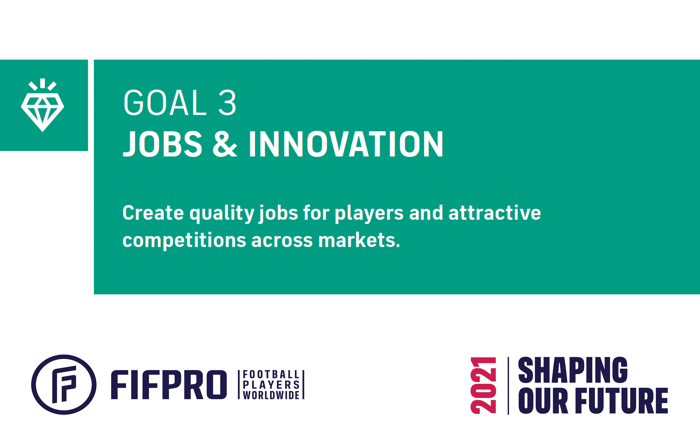

While the pandemic has had an undeniable impact on the professional game, the 2021 Shaping our Future report takes into account the developments in football over the past whole decade. The goals and actions that are drawn from this analysis, have an aim to improve the industry over the next ten years. The infographic below provides an overview of the first goal: why and how FIFPRO is looking to improve industry stability.
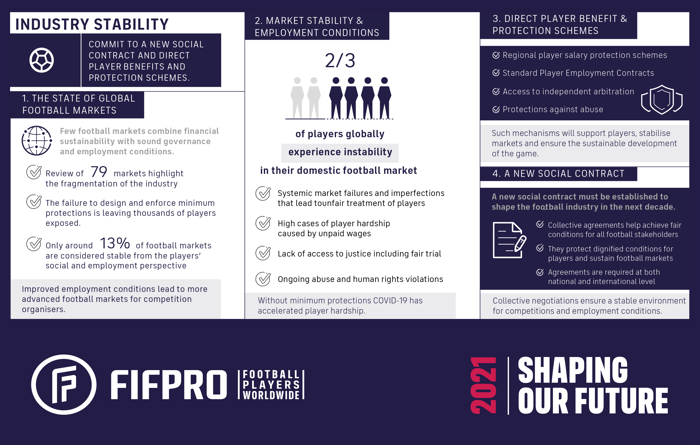
1 The state of the game football markets
Professional football has seen year-on-year growth in its leading markets and across leading competitions. However, the comparative analysis of global football markets highlights an existing fragmentation of the football industry; while the financial performance of certain market segments have improved in the last decade, others continue to suffer from poor management, the absence of protection mechanisms and a lack of investment.
“Two out of three of players experience instability in their domestic football market”
2 Market stability and employment conditions
Two out of three of players experience instability in their domestic football market. Few football markets combine financial sustainability with sound governance and employment conditions. Players are often immediately and directly affected by market failure as well as imperfection in the football industry, as proven by the large number of overdue payables to players. Stabilisation policy schemes do exist, but only a minority of players have benefited from them. Improved employment conditions lead to more advanced football markets for competition organisers.
3 Direct player benefit and protection schemes.
The creation of direct Player Benefit & Protection Schemes plays an important role in stabilising football economies at global, regional and national levels. In particular, the integration of the football economy at continental level shows that a direct player benefit and protection scheme would accomplish the mission of stabilisation, fair redistribution and direct player support, resulting in a more sustainable industry.
“the football industry needs a new social contract to guide the game through the next decade”
4 A new social contract
The FIFA Fund for Football Players in 2020 was a first step to create direct player salary protection mechanisms in the game. The demand from players shows the importance of the further expansion of such mechanisms. The potential size and design of Player Benefit & Protection Schemes is clearly related to the stabilisation effect that one would wish the scheme to have. The focus should, however, not solely rest on salary protection, but should take into account other market imperfections.
A series of social agreements on the future world of work of players and the sustainable development of the football industry is required. Similar to the ILO Global Commission report on the Future of Work, the football industry needs a new social contract to guide the game through the next decade. Such an agreement needs to offer solutions to the challenges experienced by players and football markets across the entire industry.
Next up: Goal 2 - Sustainable growth
Click on the image below to learn more about goal 2: sustainable growth.
